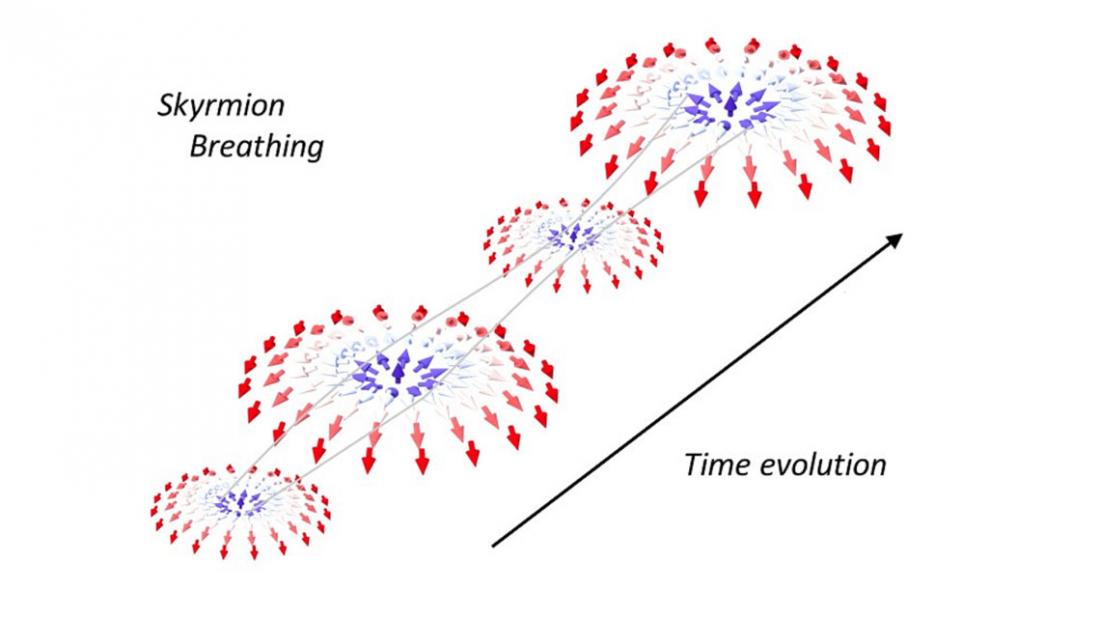A Schematic of the Skyrmion Breathing Movement that Changes with Time by the External Current Stimulus
'Skyrmion,' a swirling spin structure arranged in the shape of a spiral, was demonstrated in 2009 and has been attracting great attention in academia as a possible basic unit of ultra-high-density and high-speed next generation memory devices due to its unique topological stability, small size, and efficient movement. Recently, Korean researchers have developed a technology that can be applied to the next generation ultra-low power and ultra-high frequency communication devices by using a unique spin structure called skyrmion.
The joint research team, DGIST-KIST (Korea Institute of Science and Technology), explored a physical phenomena applicable to a completely new type of next generation broadband communication devices using a skyrmion spin structure, which had been beyond experimental observations.
There have been predictions that it is possible to implement a unique kinetic movement of a skyrmion called as *‘Skyrmion Breathing’ in a next generation high-frequency oscillator devices as well as memory devices, However, due to the ultra-small size and ultra-fast motion of the skyrmion, direct observations of skyrmion breathing motion has been considered difficult to achieve.
The results of this research are the first in the world to describe the detailed ‘Skyrmion Breathing motions,’ based on experimental observations. The DGIST-KIST collaborative research team successfully observed and measured the controlled motion and breathing of a skyrmion in response to the external signals that occurs within a few nanoseconds (nsec, 1 billionth of a second) using a synchrotron X-ray technique with excellent time and space resolving powers.
In addition, this research has also developed an efficient skyrmion generation method using external current pulses. It can be said that the results of this study are important because they suggest that skyrmion can play a significant role in many other future electronic devices, beyond memory devices, which had been of primary focus till now.
Director Jung-Il Hong from the DGIST-LBNL Research Center for Emerging Materials said, “The new approach utilizing ‘Skyrmion’ presented in the results of this study can suggest a new method of operation for an entire device, so its implications are great in light of the existing research trends.”
Senior Researcher Seong-hoon Woo from the KIST Center for Spintronics said, “The research results show that the high-efficiency next generation communication devices based on skyrmion are actually feasible, which was previously presented only as a theory.” He then added, “This research will contribute to accelerating the development of next generation communication devices for efficient communication among future high-performance electronic devices.”
The result was published on Wednesday May 24, 2017 in the online edition of Nature Communications, an international multidisciplinary scientific journal, and was conducted with the supports of the KIST Institutional Project, Creative Convergence Research Project, and Future Material Discovery Project of Spin-Orbitronic Material Research Group supported by the Ministry of Science, ICT, and Future Planning.
*Skyrmion Breathing: A unique magnetic dynamic motion that generates a new high frequency signal by repeating the increase and decrease of the size of skyrmion in response to external signals.



